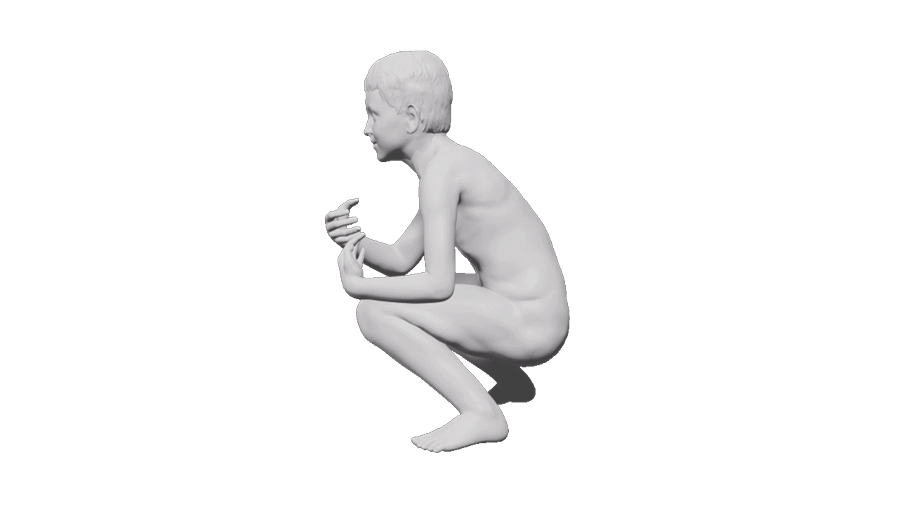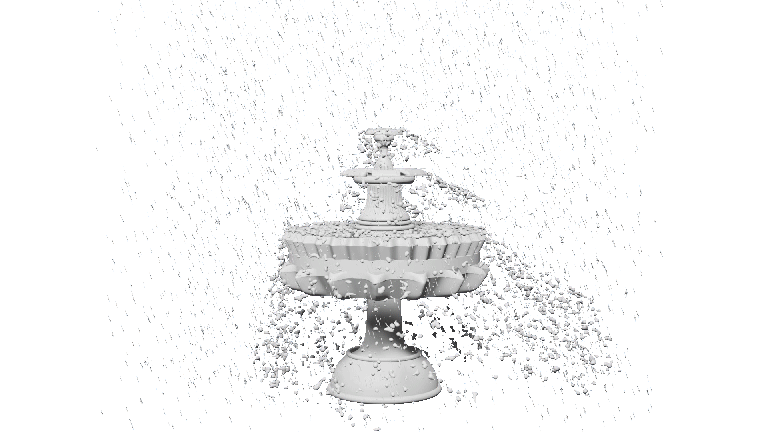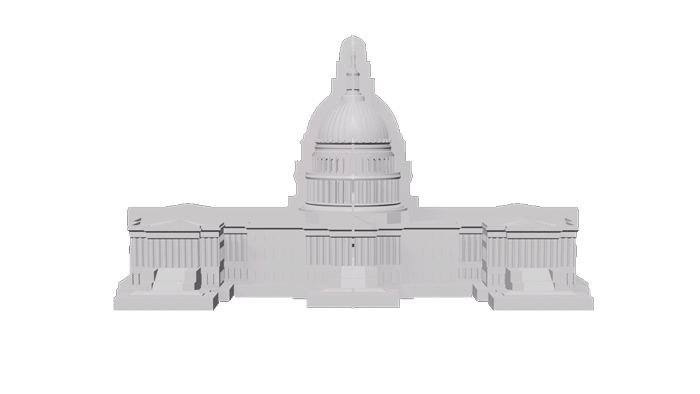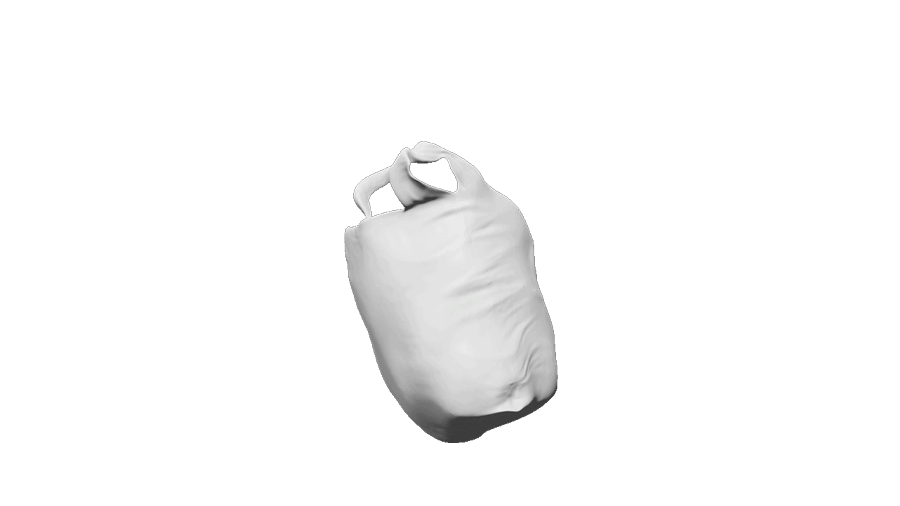A green cloth appears as the camera moves slowly under warm lighting. For a long time, the camera does not leave the green fabric, so you do not know the complete picture—what sits in front of it, what sits behind it, and its surroundings. There is no coming or going. Like with a clock, you sense time passing.
The green screen, a real prop for a fictional scene, takes an extremely monotonous form yet serves as a conduit for both exuberant spectacles and moving performances. The green screen is like the main characters in my memories and stories, whose extremely ordinary trajectories and legendary life experiences overlap and intersect in their own time. Similar contrasts and comparisons emerge from my confusion about 3D printing technology: it has a rigorous logic that could replace human hands, but like all craftsmen, it produces exciting objects from a monotonous rhythm. It relies on knowledge to program codes that “create” finished products, rendering textures that could only be achievable with years of experience. I have embedded contradictory and bleak narrative fragments from the different characters in Green Screen into these 3D printed models of objects from my memories, then placed them in the film. You can imagine them slowly appearing amidst the sci-fi hum of the printer, just as we mumble to ourselves in front of the green screen of life.
These everyday items from my memories are the objects that the fictional protagonist in Green Screen uses in his “reality.” The green screen provides transitions or connections between different times and scenes in the plot, and the protagonist makes his way among them. There is very little dialogue; the film is primarily driven by narration and sound effects. The performance is largely focused on everyday actions, and the scenes are comprised of characters and the green screen, the green screen’s surroundings, and the placed props.
Storyline 1/
...Local rivers intertwine to provide water for the many duck farms in the area, so the down industry is flourishing. He found that the floors of down factories were often covered with duck down residues produced when the duck feathers were washed. For the factory, it was refuse that needed to be removed, but to him, it was the best organic fertilizer for agriculture. He cleaned the down factory for free and recycled the residue. He loaded it into a truck and resold it to farms rented by Hongkongers because they mostly used costly organic fertilizer. This became a successful business, and selling truckload after truckload of duck down residue allowed him to build a house nearby.
Storyline 2/
...Two years later, he built a house in Uganda in the same style as his old home, only with a closer iron fence and a surveillance system on the outside walls.
One time, he returned to his hometown and brought back a lot of local specialties for his friends and neighbors. His son, who hadn't seen him for a long time, gave him a birthday gift he had prepared. When he opened it, it was a small ornament, probably used as a paperweight or a brush holder, engraved with the characters for “Knowledge is boundless.” He did not practice calligraphy, but he was happy because this was the first gift his son had ever given him, even though it looked more like a gift that a father would give to his son. He brought the gift back to his home in Uganda and placed it prominently on his desk.
Storyline 3/
...The port had been inactive for quite some time, and it's unclear when things began to slow down. In recent years, a large water supply station was built to provide for the new steel plant and petrochemical projects in the area. A massive dike and sluice gate were erected on the open river adjacent to the former port. A large carved stone on the dike described the construction of this water supply project as “auspicious, like the dragon that locks the river." He placed a memento of the project’s completion in his home, a paperweight shaped like the dike.
Storyline 4/
...The boss equipped him with a pickup truck because he had worked as a driver. He was very pleased with this job because having a car to drive around in was considered dignified in his hometown.
The project was delayed, but a concrete road had been specially built to connect the town road to the planned wind power site. Interestingly, the road was three meters across, only wide enough for one car to pass. In other words, the road was only for his use.
Three years passed in this way, and eventually, the project was abandoned. He was unemployed once again. Showing him some sympathy, his boss sold him the pickup truck for a very low price, which he gladly accepted.
Occasionally, he takes his wife and daughter for a ride along the small road that now ends at the sand and sea, where a plan came to nothing.
I am trying to describe a type of ghost, but I am not sure whether it’s an actual ghost or my imagination. In an afterthought, my so-called "ghost" is more like a mood that inhabits everyday objects, only that this mood is ineffable.
A few bowls I have brought from home in my studio kitchen belonged to deceased relatives, but I continue to use them. I think the objects extend our relationships which is crucial to me. A thing is complex in itself, partly because it is tangible - its material, the traces of use, its fabrication offer clues to its date of production and apparent history. Partly, it's metaphysical, unknowable of its face and weight, which is where what I call the "ghost" arises.
As a creator of things, my essential goal is to recreate these "ghosts" through objects; as I gaze at them, they also leave traces and narrative slips on me, and I want to send them further away. I imagine a raging sea made of 3D printing, where neither time nor story is present. Likewise, to freeze the splash crashed by rain through a fountain in a storm is just another computer simulation, but these imageries lead to scenes that none of us have reached but easily seen through our imaginations. The "ghost " here provides legitimacy to the existence of fictional moments and dimensions. But the "ghost" can also penetrate the narrative in other forms; he can be a headless chicken that lived for two years in history. Randomly, he becomes an absurd and strange story of life and death in a mundane context. Fixing a plastic bag fluttering in the wind is a kind of evocative ritual; a beach toy that leaves a print in the shape of the White House is a metaphorical tool, and the child and his misplaced dog embody all the grief of absence.
3D modeling offers us a new technique of recreating "ghosts." This means we can now return to where we were absent, witness and fictionalize a history that does not occur and use it as an anchor point to stretch our muscles. To put it another way, it allows us to leave behind some objective evidence. For instance, a knife with all the fingerprints wiped off left in the grass, and an expert detective can deduce and solve the case without a murder case; to create an authentic, genuine murderer - a "ghost."
The "ghost" in a more elaborate narrative, on the one hand, becomes a link between people and things. At the same time, it also blurs the line between the "living" and "dead"; the most appropriate metaphor for the "ghost" would be the mirror - no matter how old the mirror is, how many old faces it has reflected, the light it deflects is always that of the present. This nature revealed is non-linear and independent but mutually inclusive and overlapping; "ghosts" are diachronic; they are omnipresent and omnipotent.












